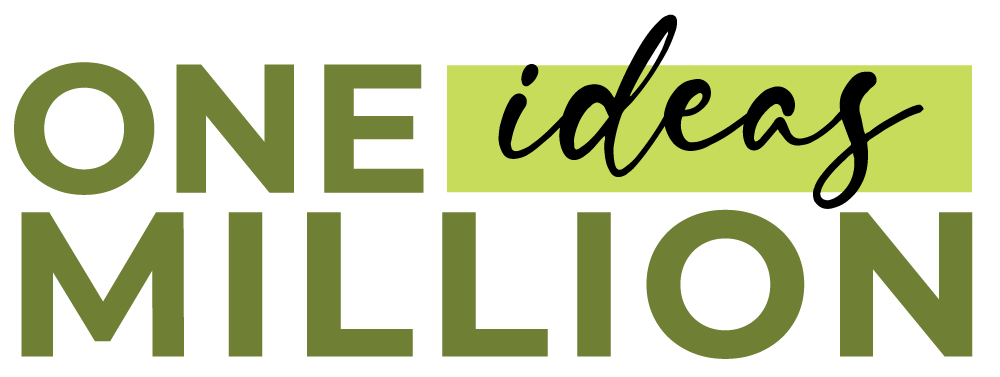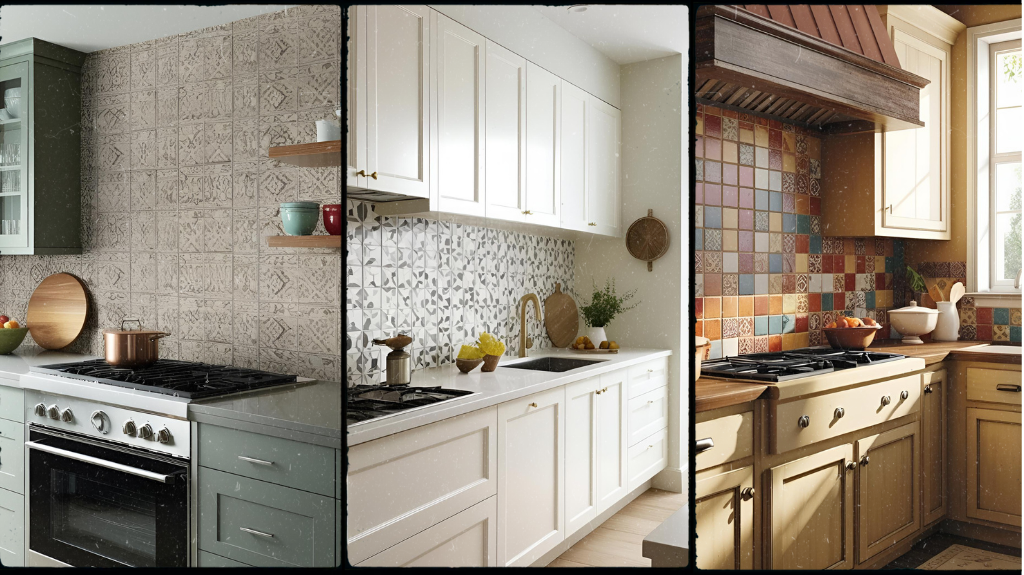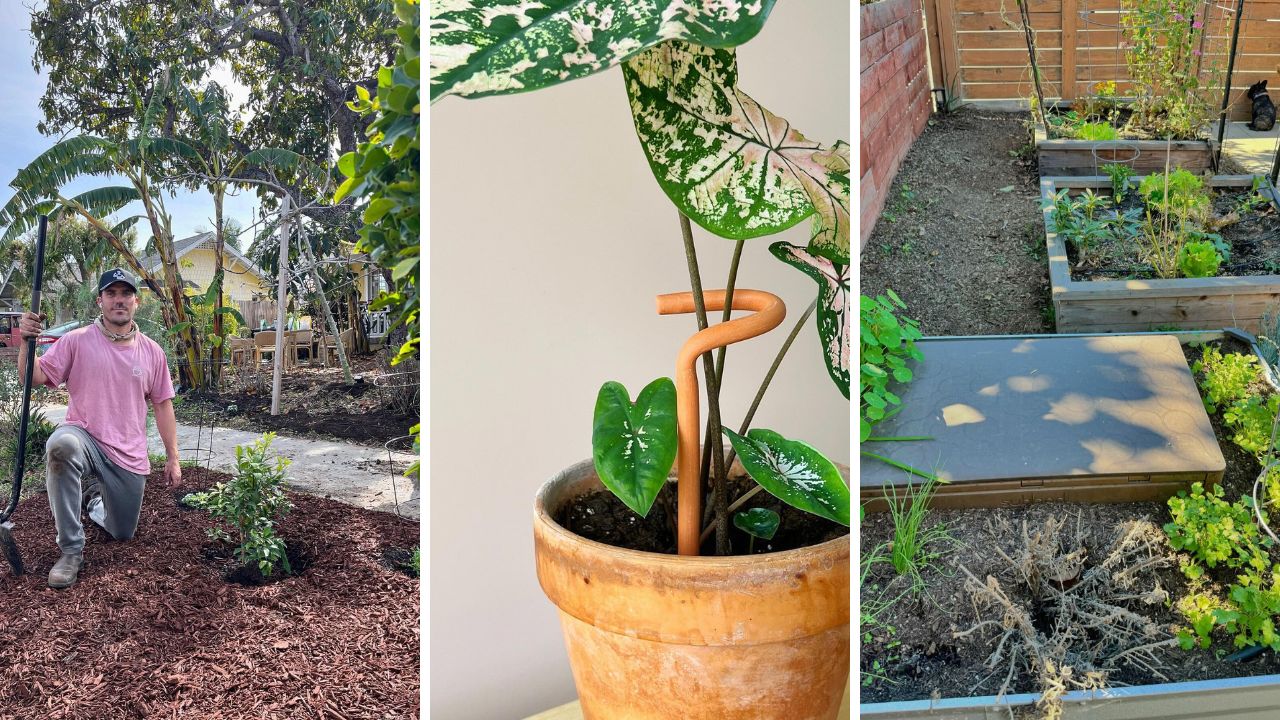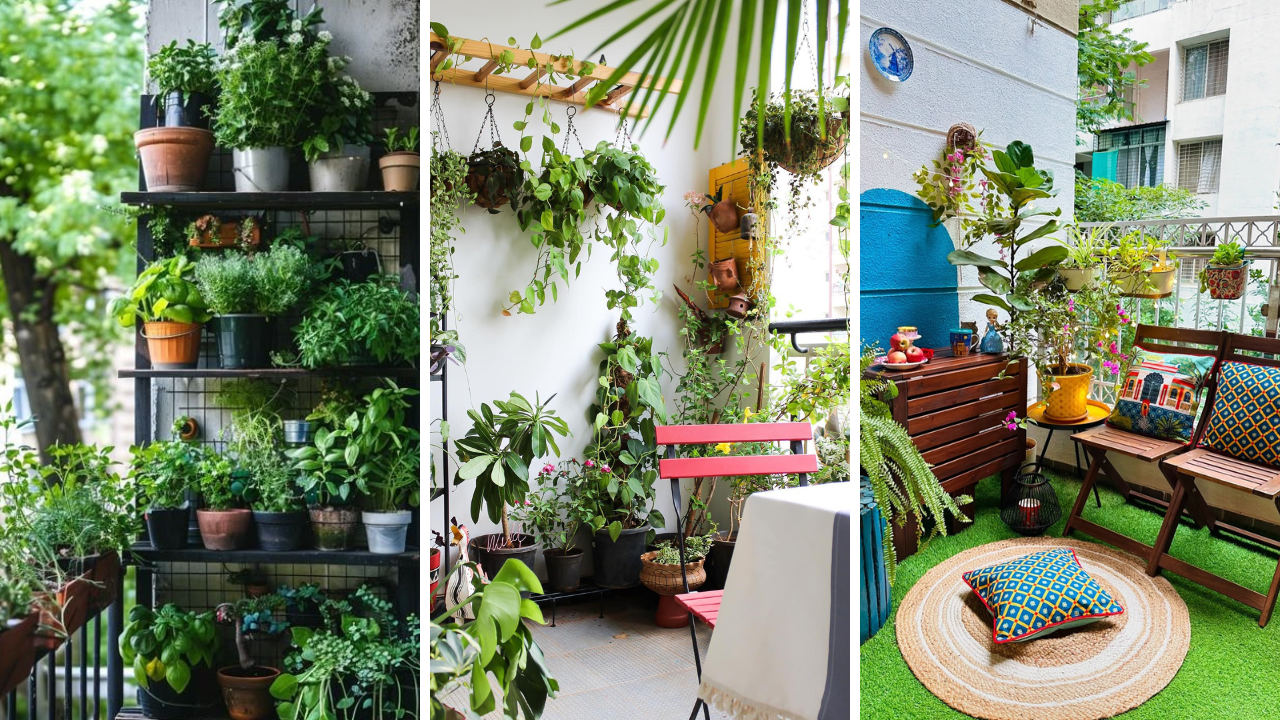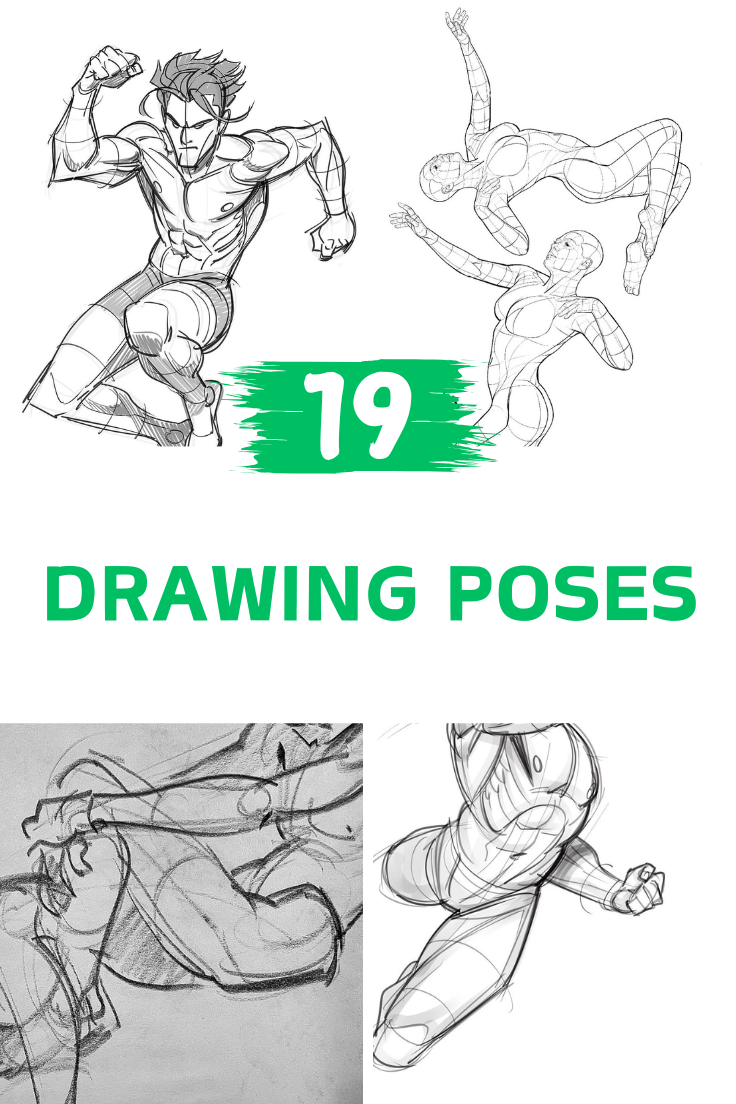
Drawing the human form is a challenging but deeply rewarding endeavor. Whether you’re just starting out as an artist or you’re looking to take your skills to the next level, trying different drawing poses is essential for improving your anatomy, proportions, and artistic expression. Poses give us the opportunity to study movement, balance, and the nuances of the human body. In this listicle, we’ll dive into 19 different drawing poses that you should try today. From standing to reclining, each pose offers unique challenges that will stretch your creativity and help you capture the fluidity and complexity of the human figure. Whether you’re aiming for quick sketches or detailed studies, these poses will allow you to explore new perspectives. We’ll also offer suggestions for Amazon products that will elevate your practice—so you’ll have everything you need to begin your next masterpiece.
1. The Classic Standing Pose
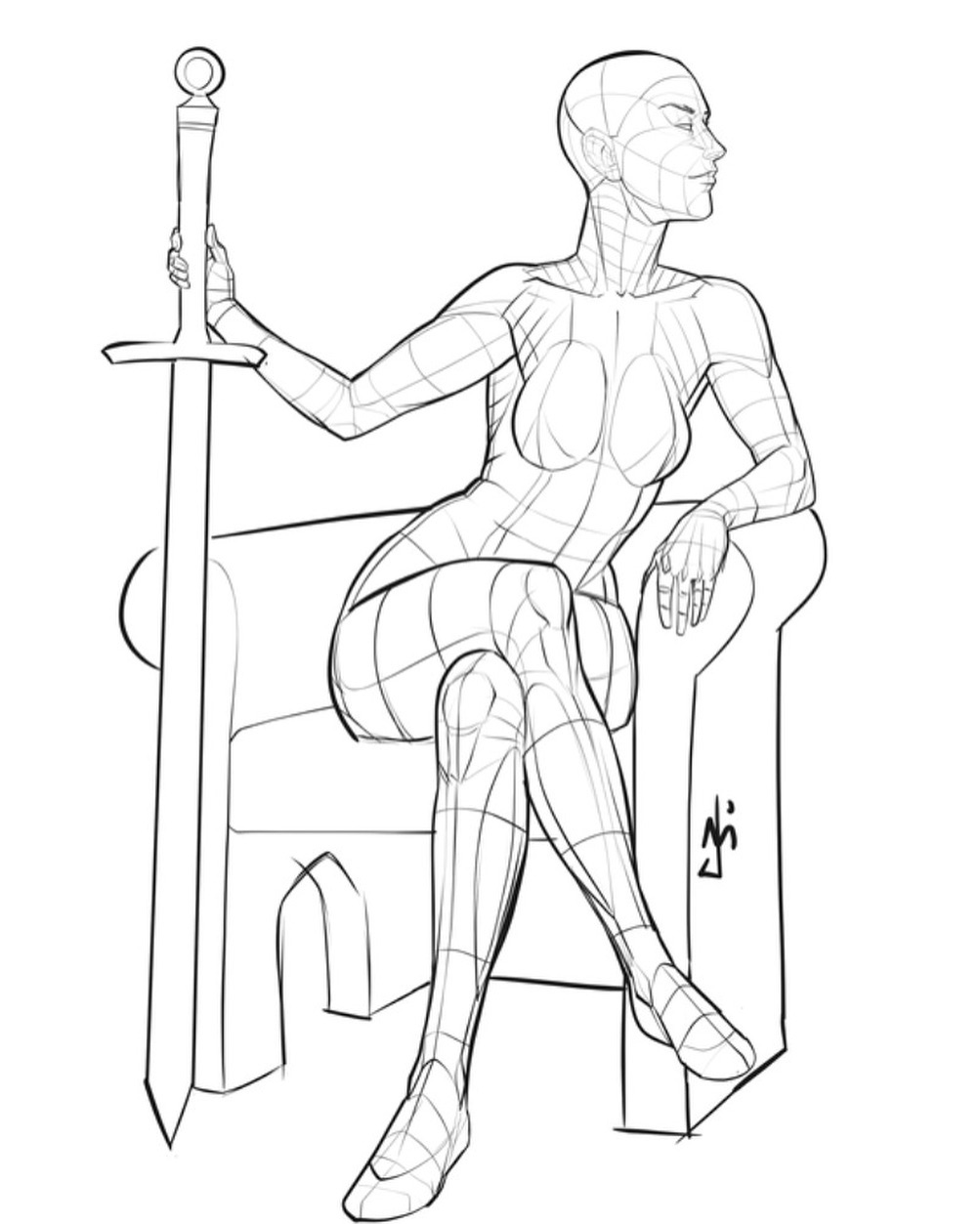
source @posereference
The standing pose is one of the most fundamental positions to master when drawing the human figure. It’s often the first pose that art students learn to sketch because it helps establish an understanding of body proportions and balance. The simplicity of a figure standing upright presents challenges in capturing the alignment of the spine and limbs, and it’s crucial for understanding how gravity affects the body. A classic standing pose is a great starting point for beginners, allowing them to focus on essential elements like posture, proportions, and overall structure. To elevate your practice, consider using a high-quality sketchbook that can handle various drawing techniques, like a Strathmore 400 Series Sketch Pad available on Amazon. This sketchbook provides a durable surface for both light and dark pencil work.
2. Seated Pose
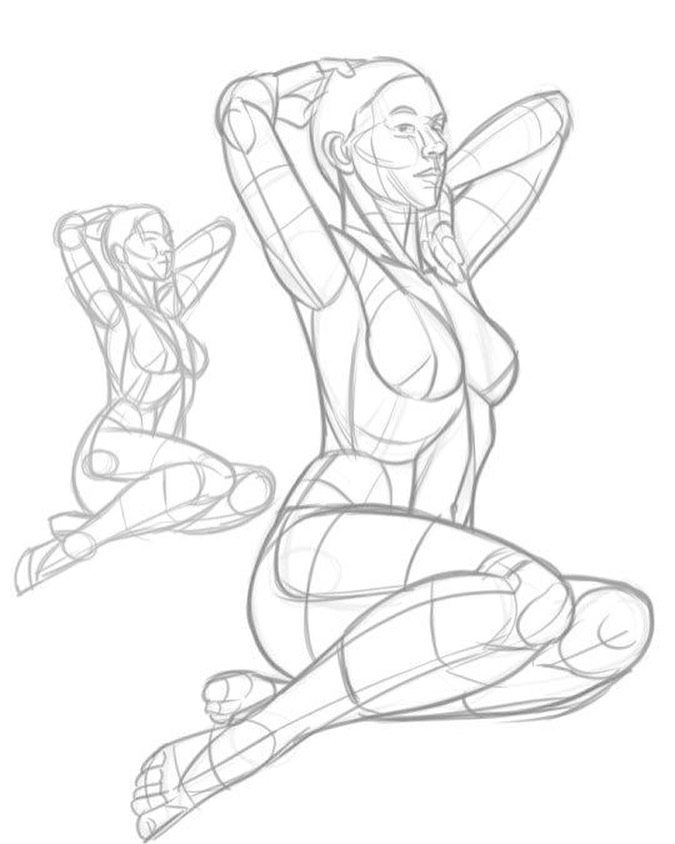
source @posereference
The seated pose brings an interesting dimension to your artwork. When a figure is seated, it adds complexity because the body must distribute weight differently than when standing. This pose allows you to experiment with perspective, as you must pay close attention to the angles of the limbs, the curve of the back, and the position of the head. It’s a pose that challenges artists to think about the interaction between gravity and form. Sitting positions like cross-legged or relaxed in a chair also offer unique angles for rendering the body, especially the legs. To achieve fluid, clean lines in your seated drawings, consider investing in fine-tip Micron Pens from Amazon, perfect for detailing intricate lines and shadows.
3. Action Pose
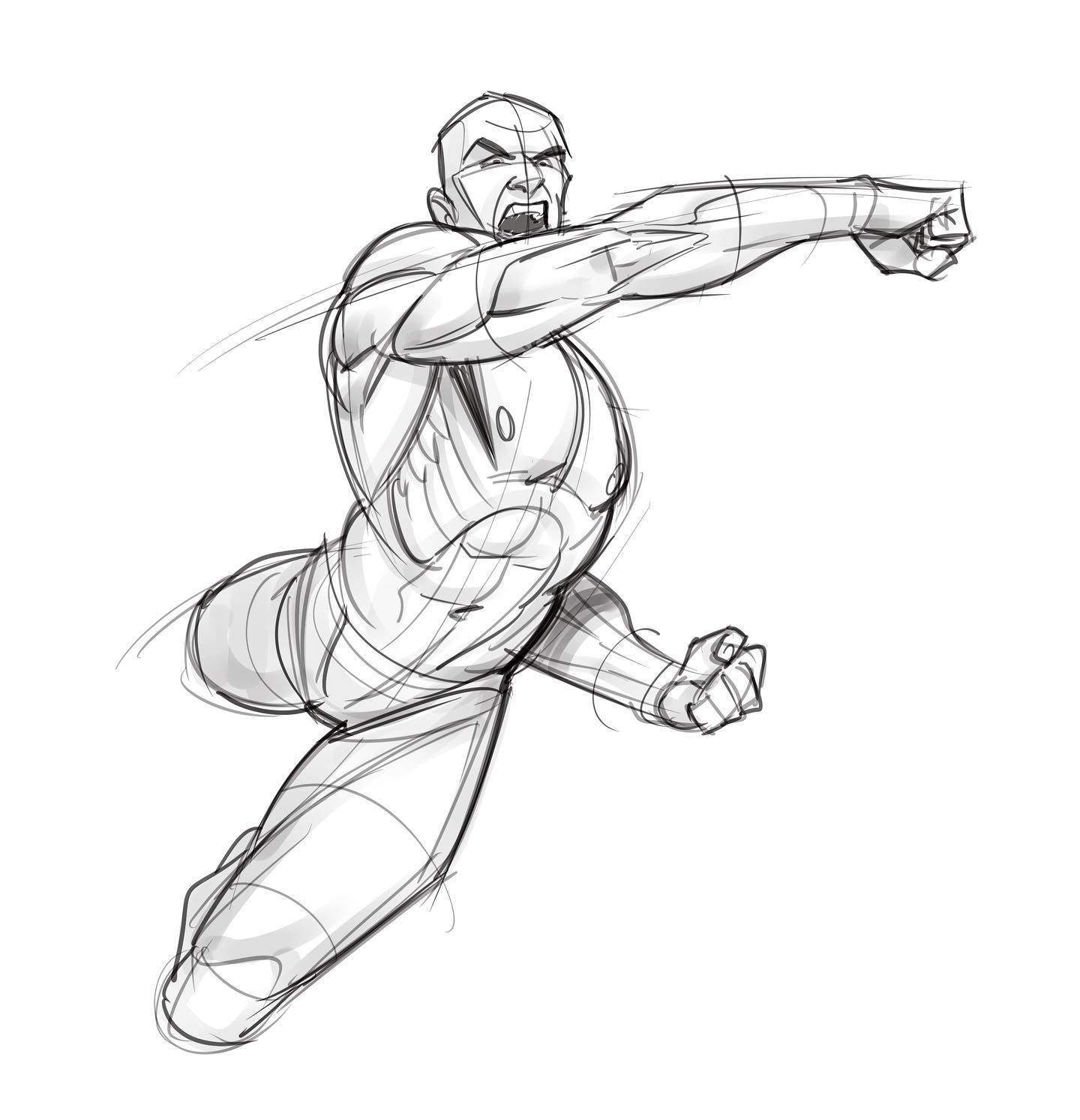
source @k_petchock_art
Action poses are full of energy and movement, making them essential for any artist looking to improve their skills. These types of poses show a figure in motion, whether it’s running, jumping, or stretching. Capturing movement is a challenging task, as it involves anticipating how the body contorts and shifts in mid-motion. A key focus when drawing action poses is to understand the muscles and their stretch and compression. You’ll also need to visualize the trajectory of movement and how to convey that feeling on a two-dimensional surface. To practice drawing action poses, consider using a reference tool like Pose Reference from Amazon, which offers 3D models to help artists visualize different action poses and body movements.
4. Reclining Pose
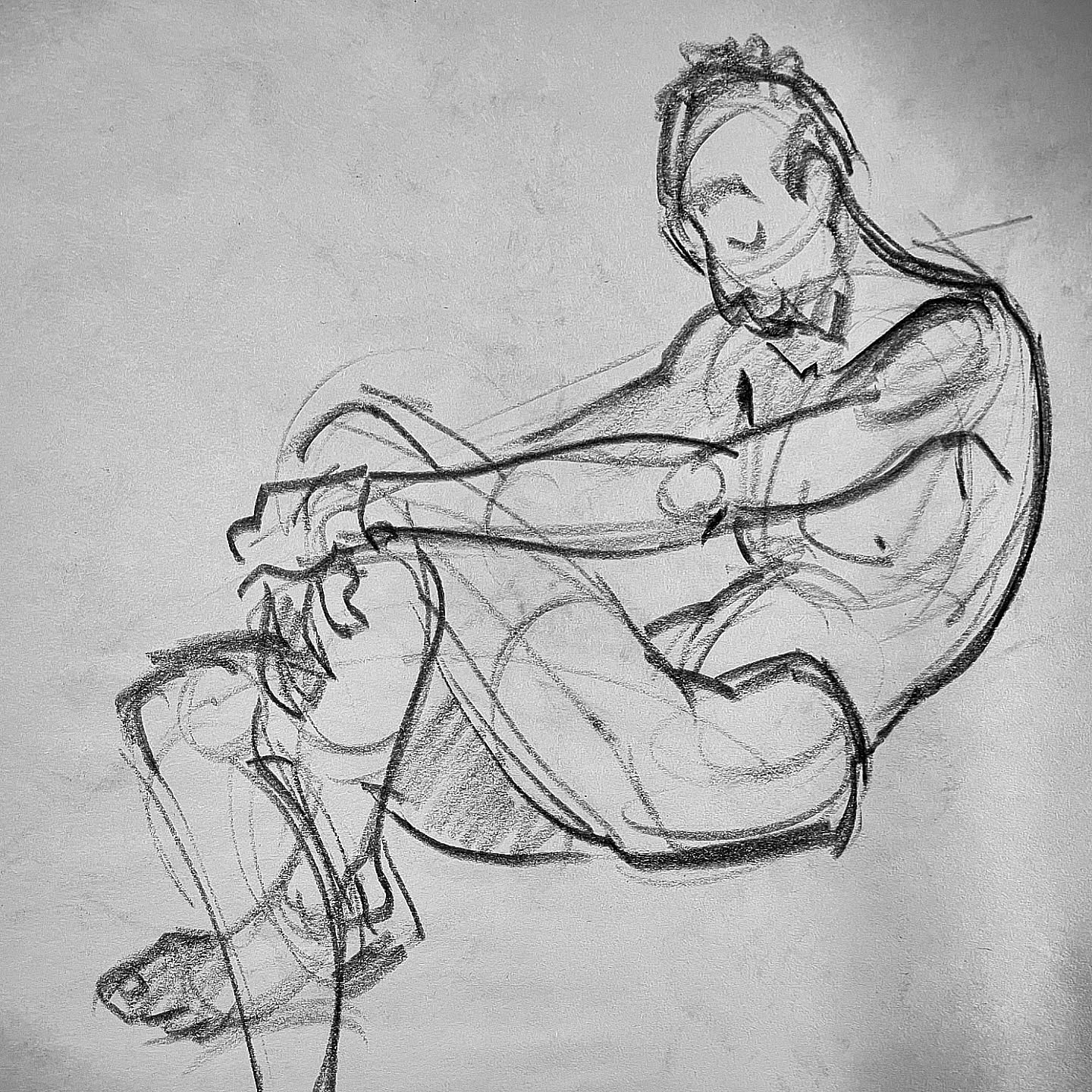
source @gilliangestures
Reclining poses offer an excellent opportunity to study body posture and foreshortening. A figure lying down, whether casually on a sofa or resting in a more formal pose, allows you to experiment with how the figure’s limbs and torso interact with the surface they’re lying on. The reclining position gives your artwork an elegant feel, and this pose is often used in portraiture. As you draw, think about how gravity pulls certain parts of the body and how weight distribution changes when someone lies down. Foreshortening, especially with limbs coming toward or away from the viewer, is a great challenge in these types of poses. You can practice using a Winsor & Newton Sketchbook, which is perfect for detailed studies of human figures.
5. Crossed Arms Pose
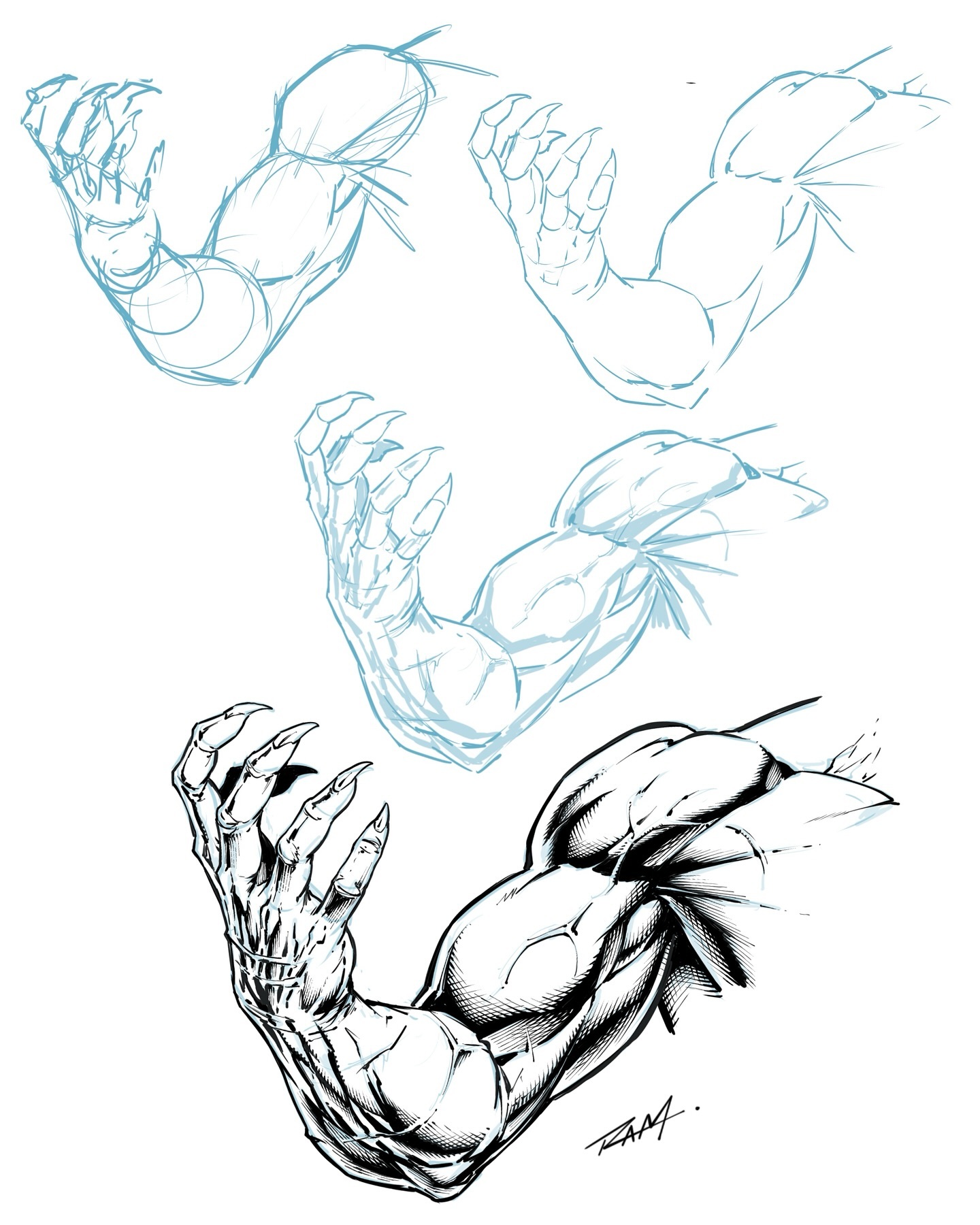
source @robert_marzullo
The crossed arms pose is an intriguing one because it not only demonstrates a physical stance but also conveys body language and emotion. This pose is often associated with a sense of self-assurance, contemplation, or even defensiveness. As an artist, you will need to carefully observe how the arms fold across the torso and how the shoulders and chest adjust. One of the key challenges is to capture the foreshortening in the arms and hands, which can be tricky when one arm is placed in front of the other. This pose also offers an opportunity to explore body weight distribution, as one side of the body becomes more prominent than the other. For more accurate hand and arm details, use a set of Prismacolor Colored Pencils from Amazon to add vibrancy and depth to your drawings.
6. The Running Pose
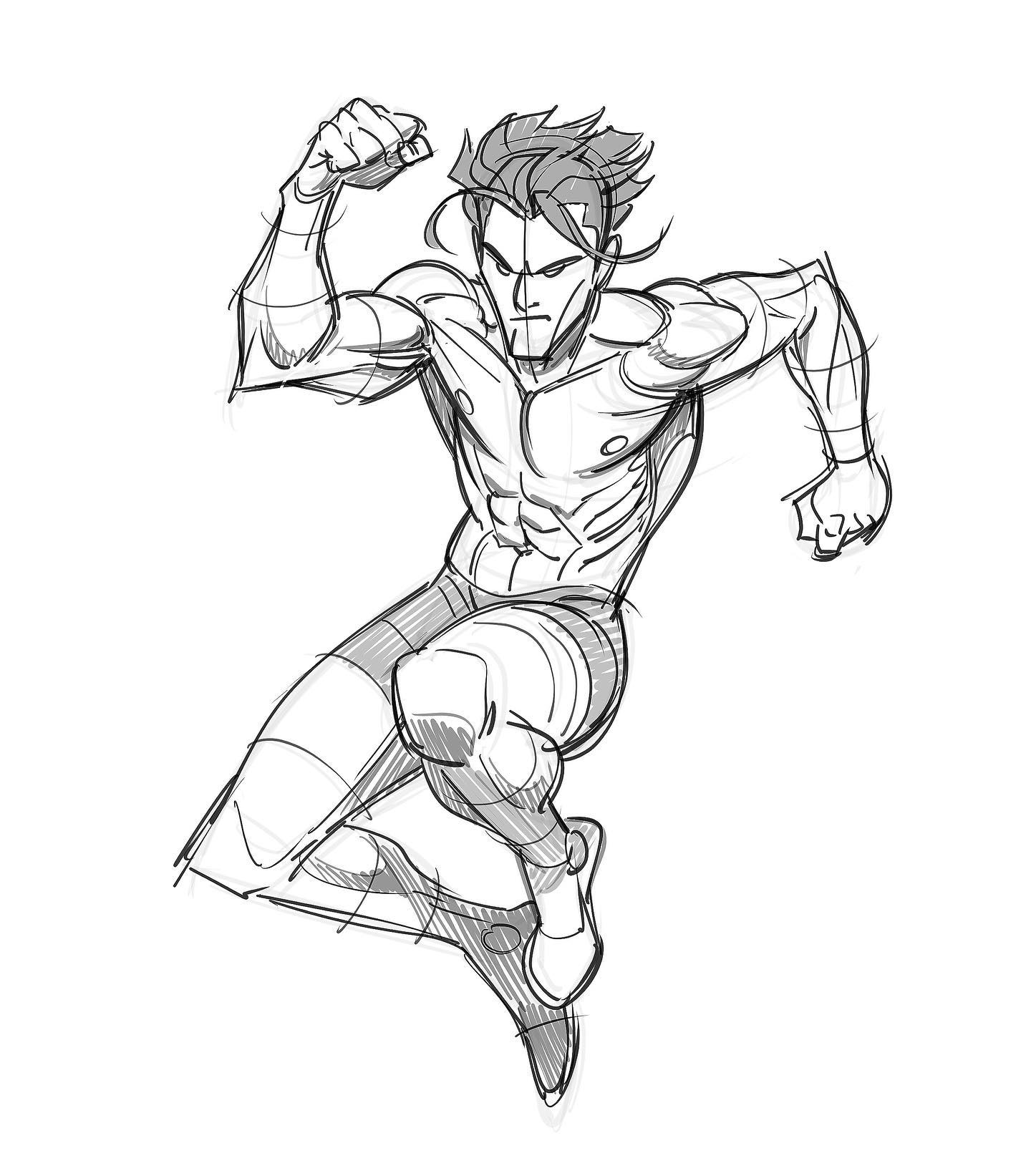
source @k_petchock_art
One of the most dynamic and energetic poses, the running position is a fantastic way to study motion in art. When someone runs, their body naturally shifts in ways that push the limits of proportion and balance. This pose allows you to capture the intense energy of the body as it moves forward, with muscles tensed and stretched. The key to successfully drawing running poses lies in understanding the muscle contractions during movement and how different limbs interact during each stride. For beginners, it might help to break down the pose into smaller components, focusing on the body’s alignment and the motion of each limb. A digital tool, like a Poseable Human Figure Model from Amazon, can be a helpful reference for mastering running poses.
7. Stretching Pose
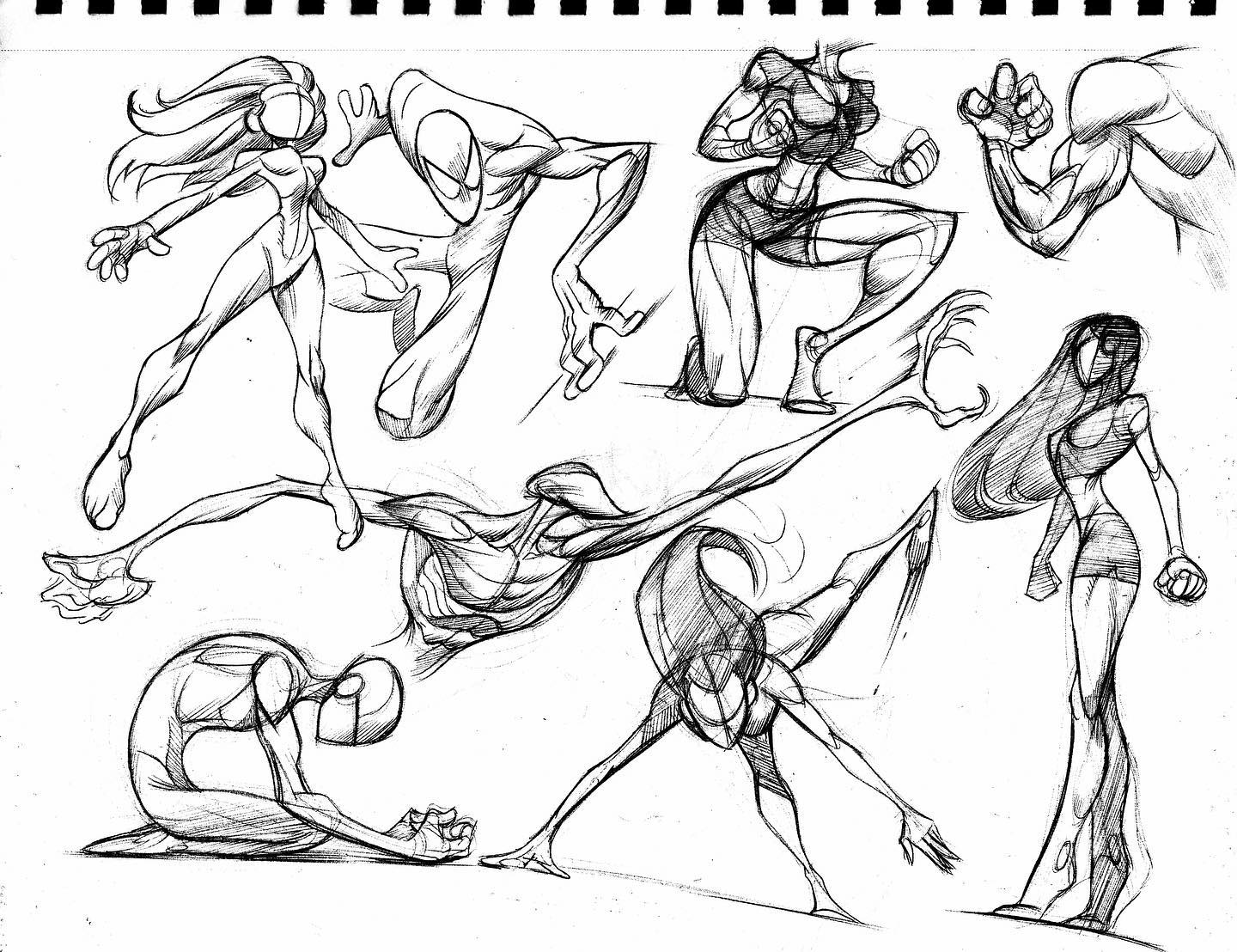
source @colorreaper
Stretching poses offer a graceful and fluid element to your drawings. They allow you to experiment with the natural curvature of the body and the way muscles elongate. Whether it’s someone reaching overhead or twisting to stretch their back, this pose helps you explore how the body’s lines and curves shift. A stretching pose is also great for practicing torso movement and the interplay between flexibility and tension. Capturing the stretch of the arms, legs, and spine gives you the opportunity to focus on anatomical details. To make your stretching poses more realistic, try using Faber-Castell Pencils from Amazon, which are excellent for smooth, controlled strokes that allow for fine detailing.
8. Ballet Pose
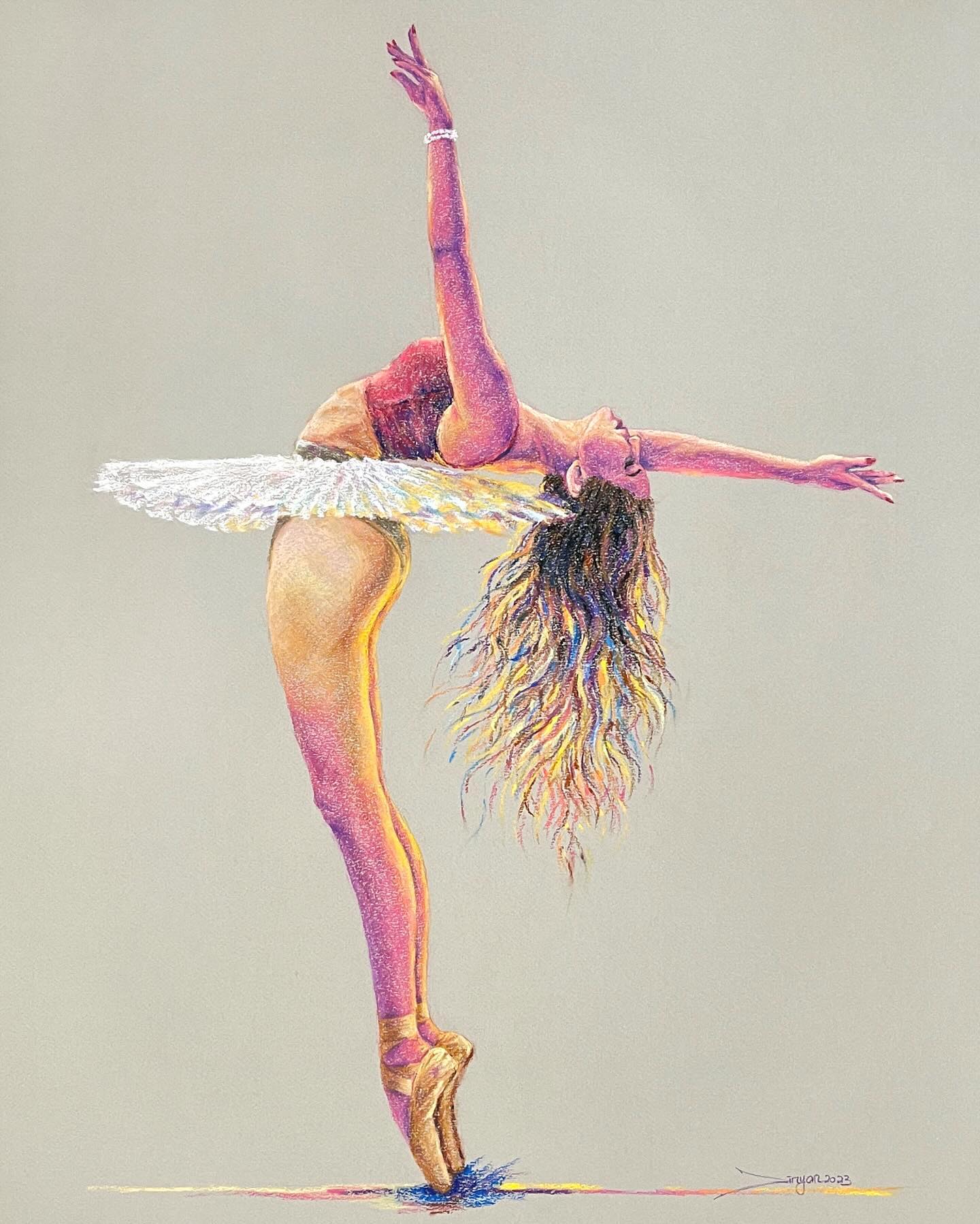
source @zinyan.artist
A ballet pose is all about grace, elegance, and perfect posture. This type of pose challenges you to depict both fluid movement and perfect body alignment. Whether it’s a pirouette or a simple ballet stance, you will need to capture the balance and poise of the figure. Ballet poses are particularly effective for studying the human figure’s ability to hold a position that requires strength and flexibility. The delicate arches of the feet, the stretch of the arms, and the lengthening of the body provide an excellent opportunity to focus on proportions and the overall beauty of human movement. A good reference for ballet poses is a Ballet Reference Book or even a set of ballet DVDs available on Amazon, where you can see live-action movements in detail.
9. Lying on the Side Pose
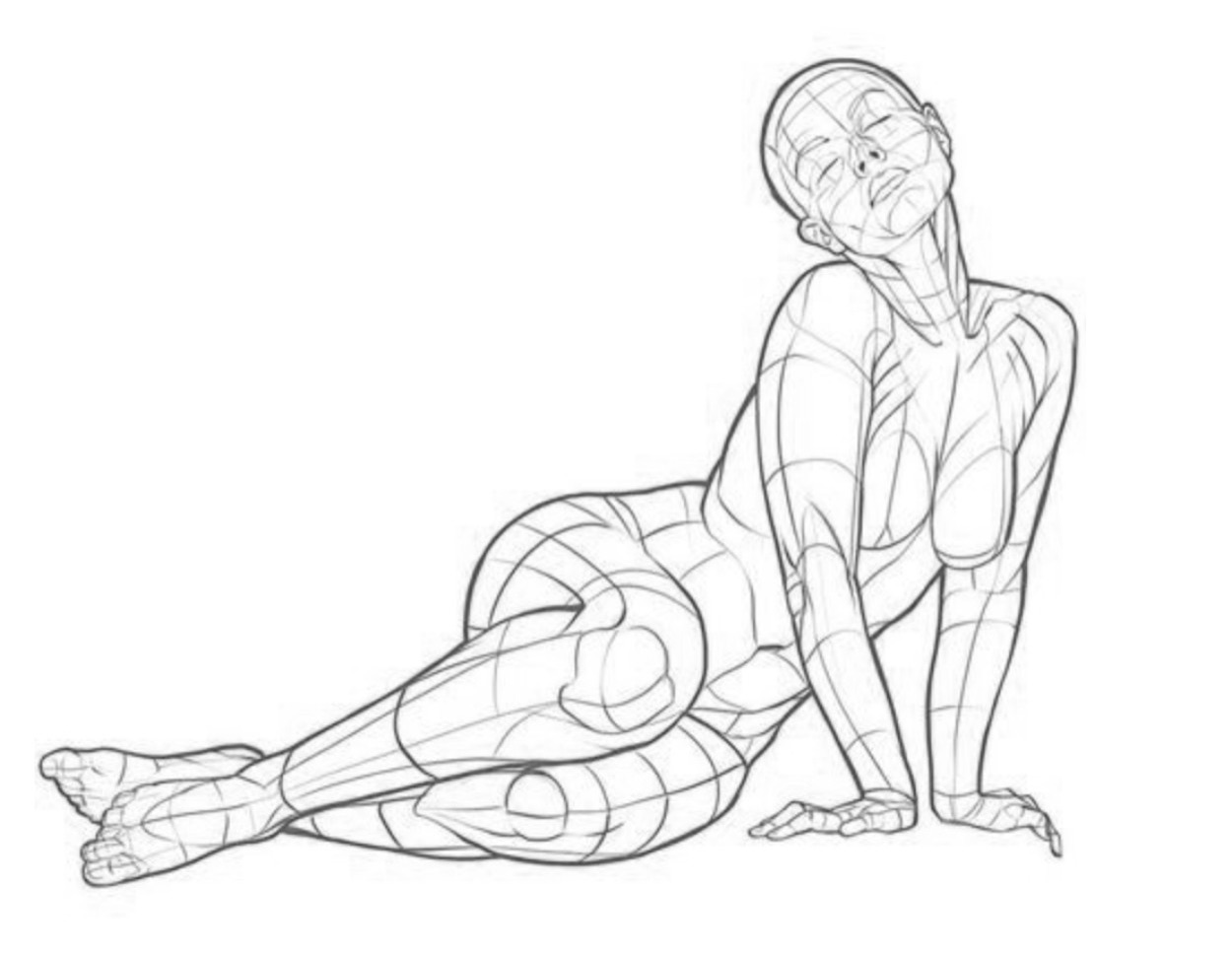
source @posereference
Lying on the side is another variation of the reclining pose, but it adds an interesting dynamic to your sketches. In this position, one leg may be bent, and the torso will twist slightly, which helps you explore angles and foreshortening. The challenge with this pose is to accurately depict the way the body aligns when lying on its side—how gravity pulls the figure’s weight to the floor and how the body contours as a result. This pose is often seen in portraiture or relaxed settings. As you sketch, focus on the way the body’s limbs overlap and how light interacts with the curves of the figure. For better shading control, consider using Tombow Dual Brush Pens from Amazon, which offer both fine and broad tips for smooth, blended shading.
10. Twisting Pose
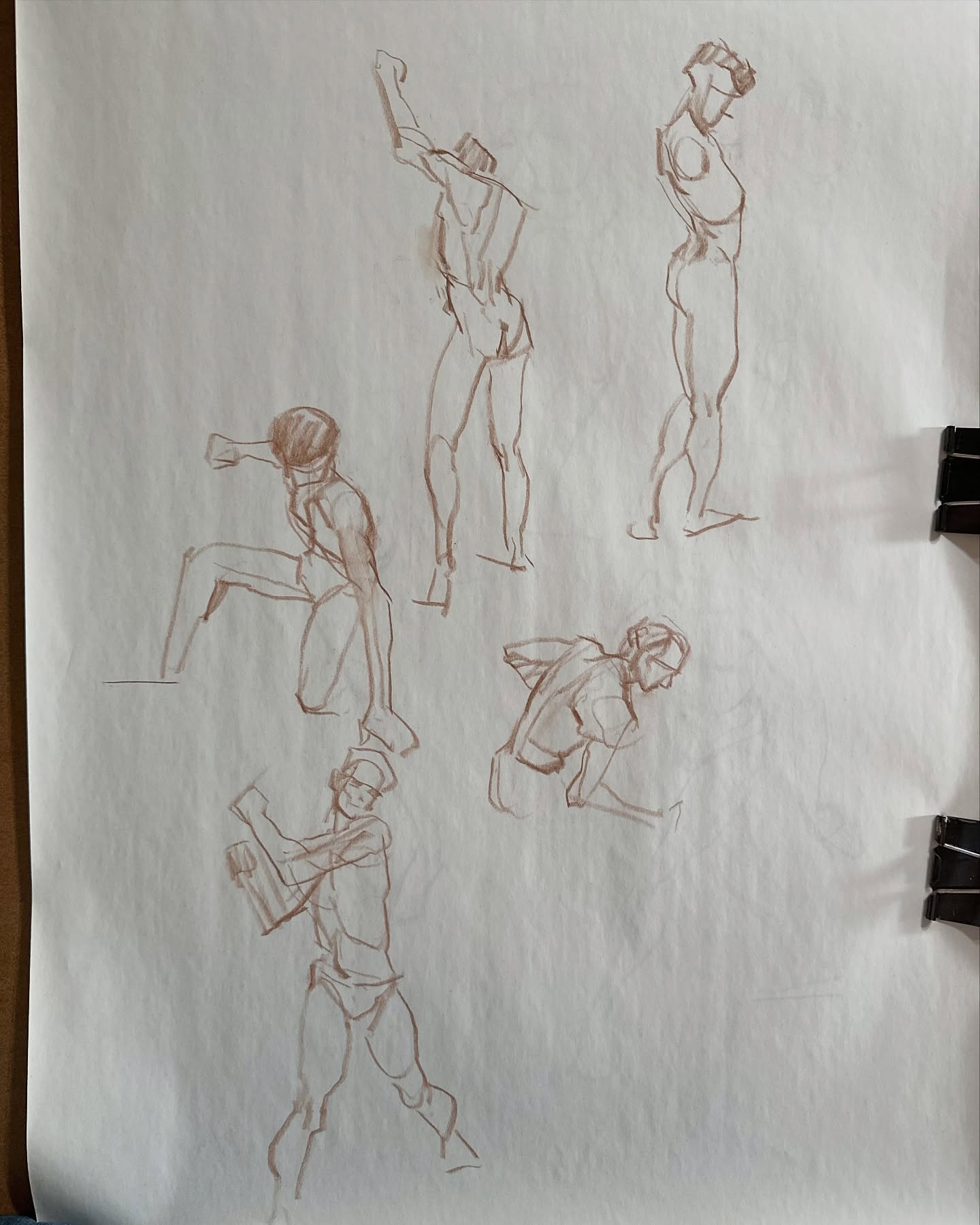
source @dethancooper_art
The twisting pose is ideal for artists looking to explore how the torso and limbs can bend and rotate. This pose captures movement and the fluidity of the human body in action. It is often seen in dance or in athletic positions where flexibility and strength are required. The main challenge with this pose is to accurately portray the complex interaction between the upper and lower body, especially as the ribcage twists and the arms and legs follow the body’s natural curvature. To truly capture the twisting motion, you’ll need to understand the way bones and muscles move in relation to one another. You may benefit from investing in an anatomy guide or reference books available on Amazon, such as Anatomy for Artists by Sarah Simblet, which will provide detailed diagrams and explanations of human movement.
11. The Sitting on the Ground Pose
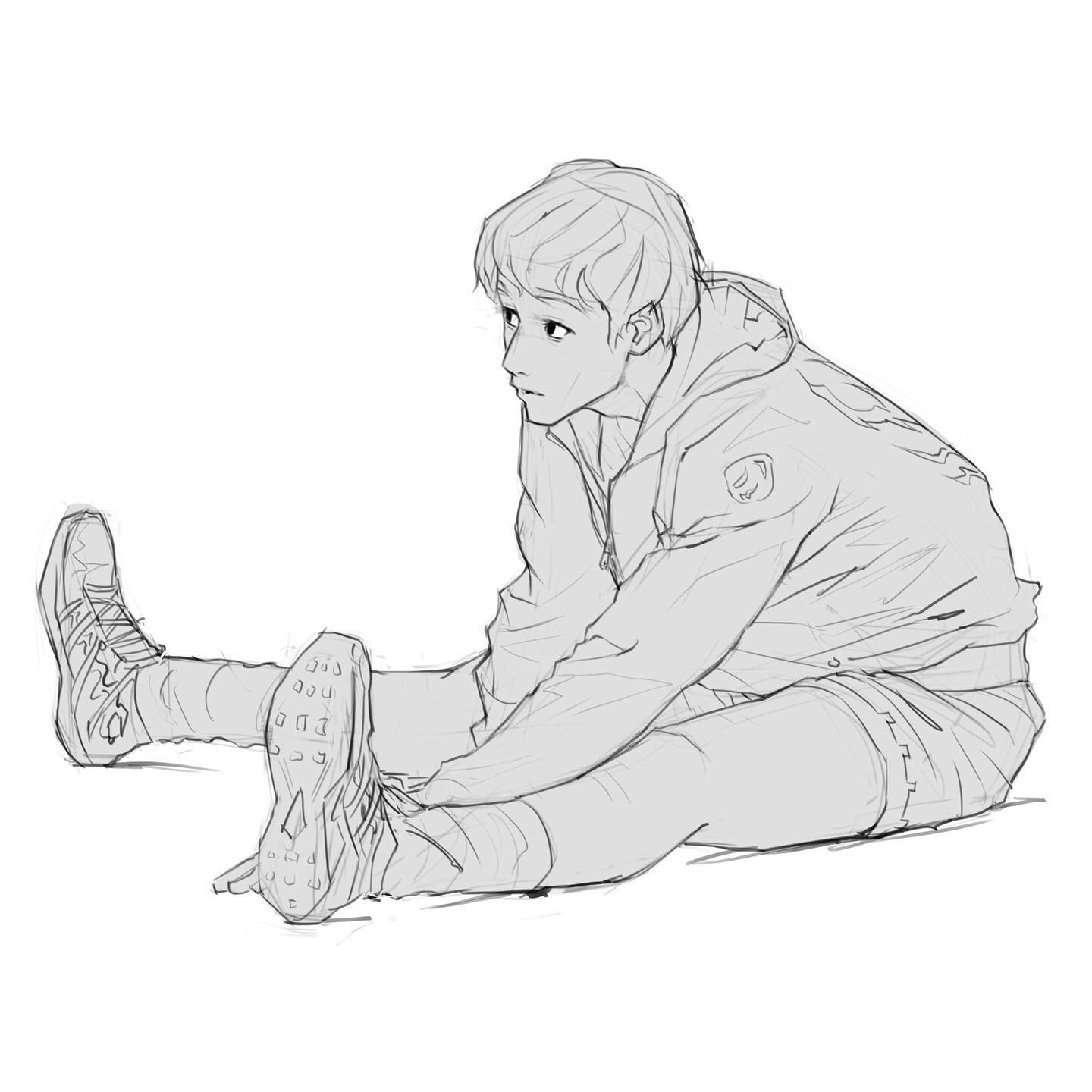
source @nfehr_arts
Sitting poses, particularly those where the figure is on the ground, offer a fantastic challenge when it comes to proportions and body alignment. This pose allows the artist to experiment with various perspectives, such as viewing the figure from above or below. When drawing someone seated on the ground, pay attention to how the body’s weight shifts and how the legs, arms, and torso interact in a seated position. The challenge with these types of poses lies in capturing the shift of weight and the way the legs bend in different directions. For creating more accurate and dynamic drawings, using a set of Copic Markers available on Amazon can help you enhance the depth and shading of the figure, adding realism to your sitting poses.
12. The Leaning Pose
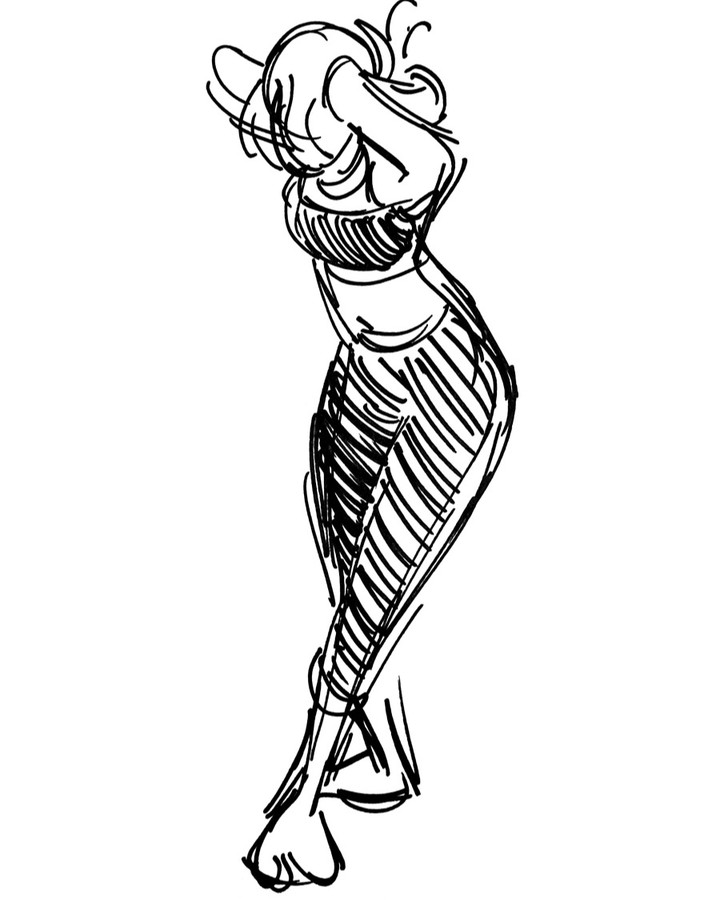
source @stephscribbles
Leaning poses are an excellent way to study the dynamic relationship between the body and support surfaces. When someone leans on a wall, a chair, or any other object, the figure’s center of gravity shifts, and you must consider how that affects the body’s posture. A leaning pose allows you to explore tension and relaxation, as the body is partially supported by an external surface. As the figure leans forward or sideways, you’ll need to capture how the weight is distributed, and how muscles and joints adjust. A great product for this would be a Adjustable Drawing Desk from Amazon. It offers a comfortable surface for drawing and provides the flexibility to try different angles when experimenting with leaning poses.
13. The Crouching Pose
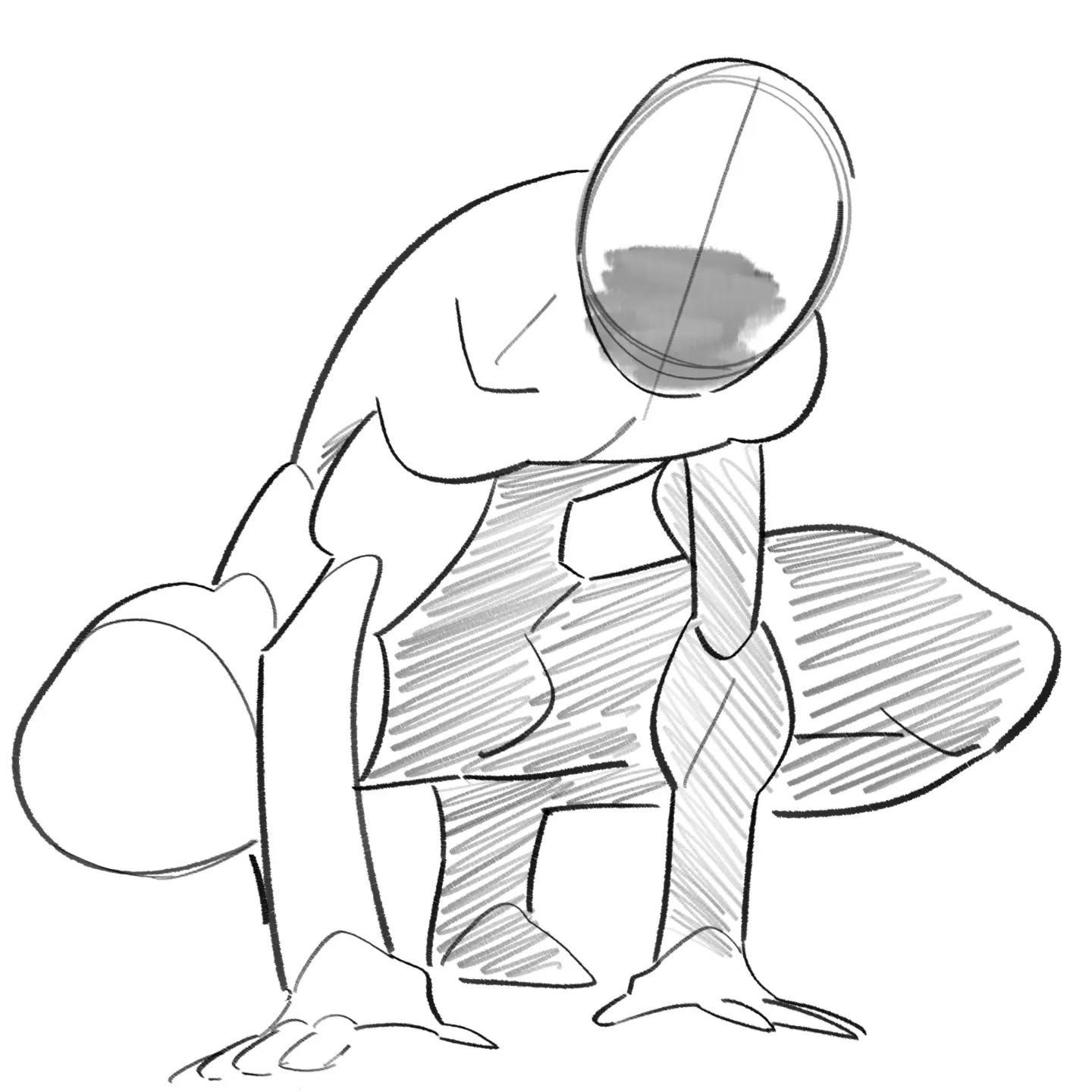
source @emiliodekure
Crouching is another pose that provides an interesting challenge for artists. The crouch is a position where the figure lowers itself towards the ground while balancing the body with bent legs. This pose is commonly seen in athletes, dancers, and people preparing to move or spring into action. When drawing a crouching figure, focus on the lower body—especially the legs, as they bear much of the weight. Additionally, consider the way the spine curves and how the body balances in this squatting stance. For capturing finer details, such as the contours of muscles and joints, a set of Derwent Graphite Pencils available on Amazon will provide excellent results for creating depth and texture.
14. The Stretching Back Pose
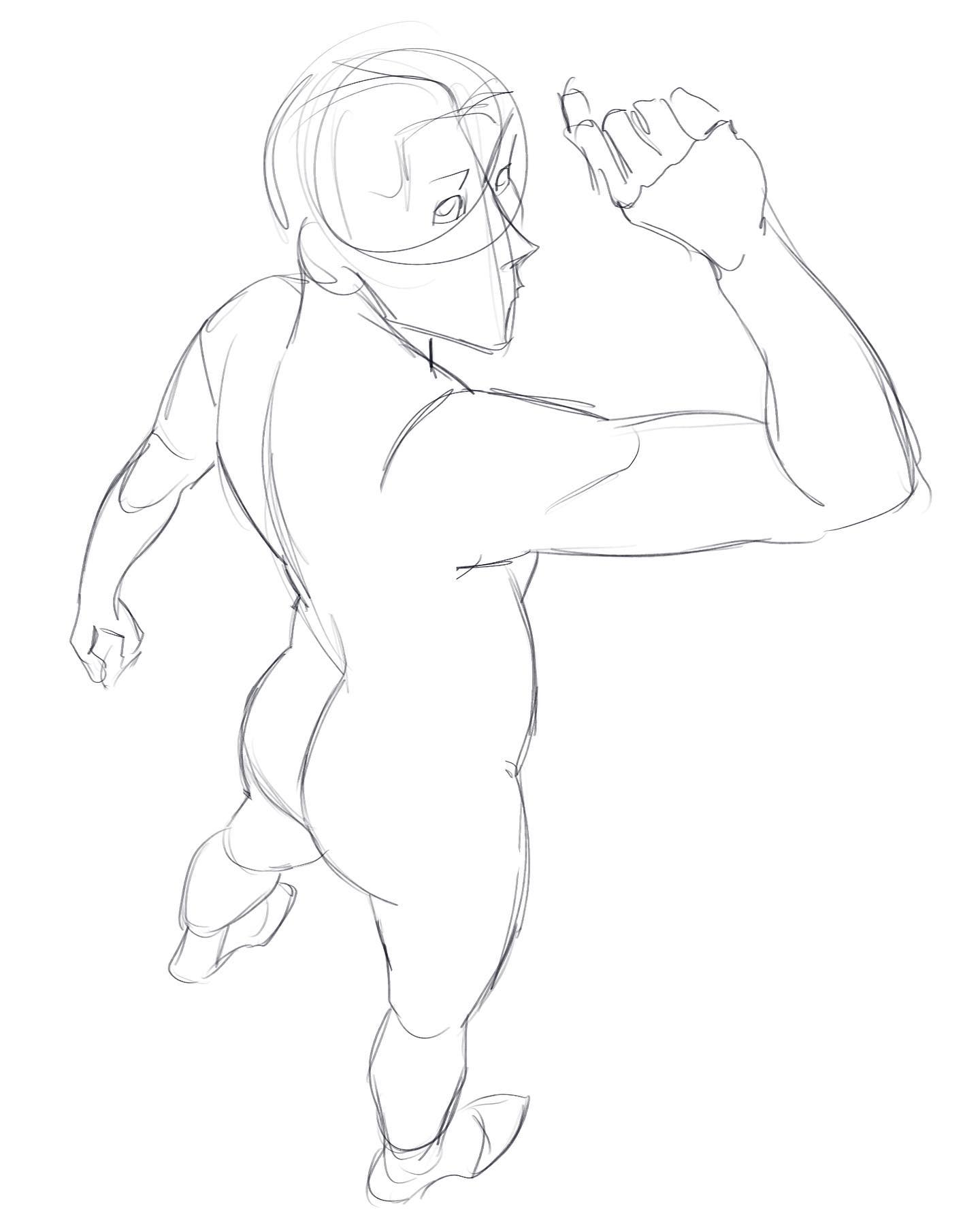
source @pose.reference
Stretching the back is one of the most interesting poses because it highlights the flexibility and curvature of the spine. When someone stretches their back, they elongate the torso, and the arms or legs may extend overhead or behind them. This pose allows you to practice foreshortening, as certain body parts may appear larger when stretched toward the viewer. Drawing this pose offers a deep dive into anatomical details, such as how the muscles contract and stretch in the process. For this kind of dynamic pose, you might find it useful to use Arches Watercolor Paper from Amazon for smoother, more fluid sketching and shading as you experiment with curvatures and angles.
15. The Yoga Pose
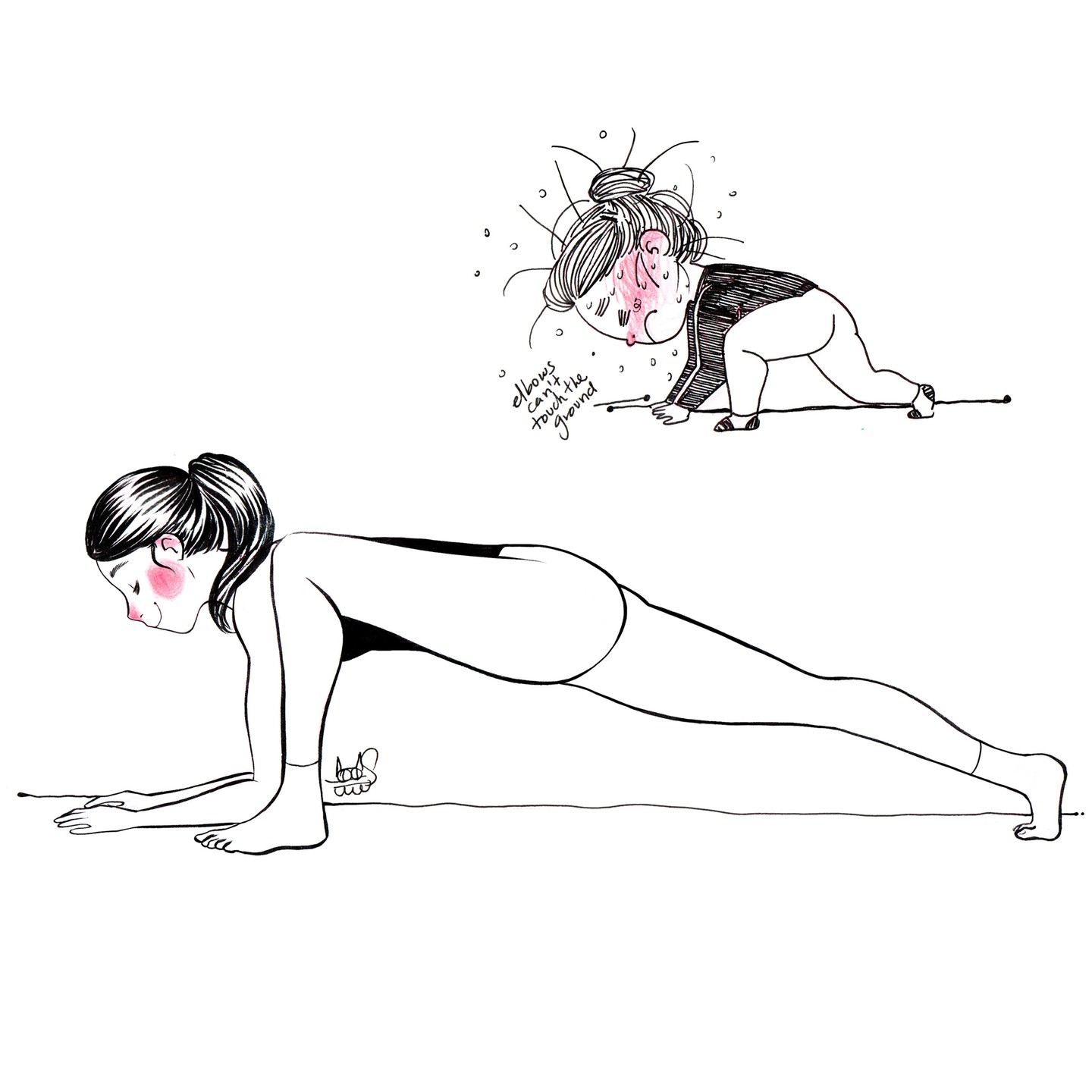
source @scarletadrianne
Yoga poses provide a wonderful opportunity to combine flexibility, strength, and balance into your drawings. Each yoga pose, whether it’s the graceful downward dog or an intense warrior pose, reveals unique aspects of the human body and its movement. These poses often require an understanding of how different body parts work together—such as how the arms, legs, and torso cooperate to maintain balance. For these poses, focus on the flow of movement, muscle tension, and the elongation of the body. To practice these poses effectively, try using an anatomy reference app, or get a yoga pose guidebook on Amazon, such as The Yoga Anatomy Manual, to break down the movements with clarity.
16. The Leaning Forward Pose
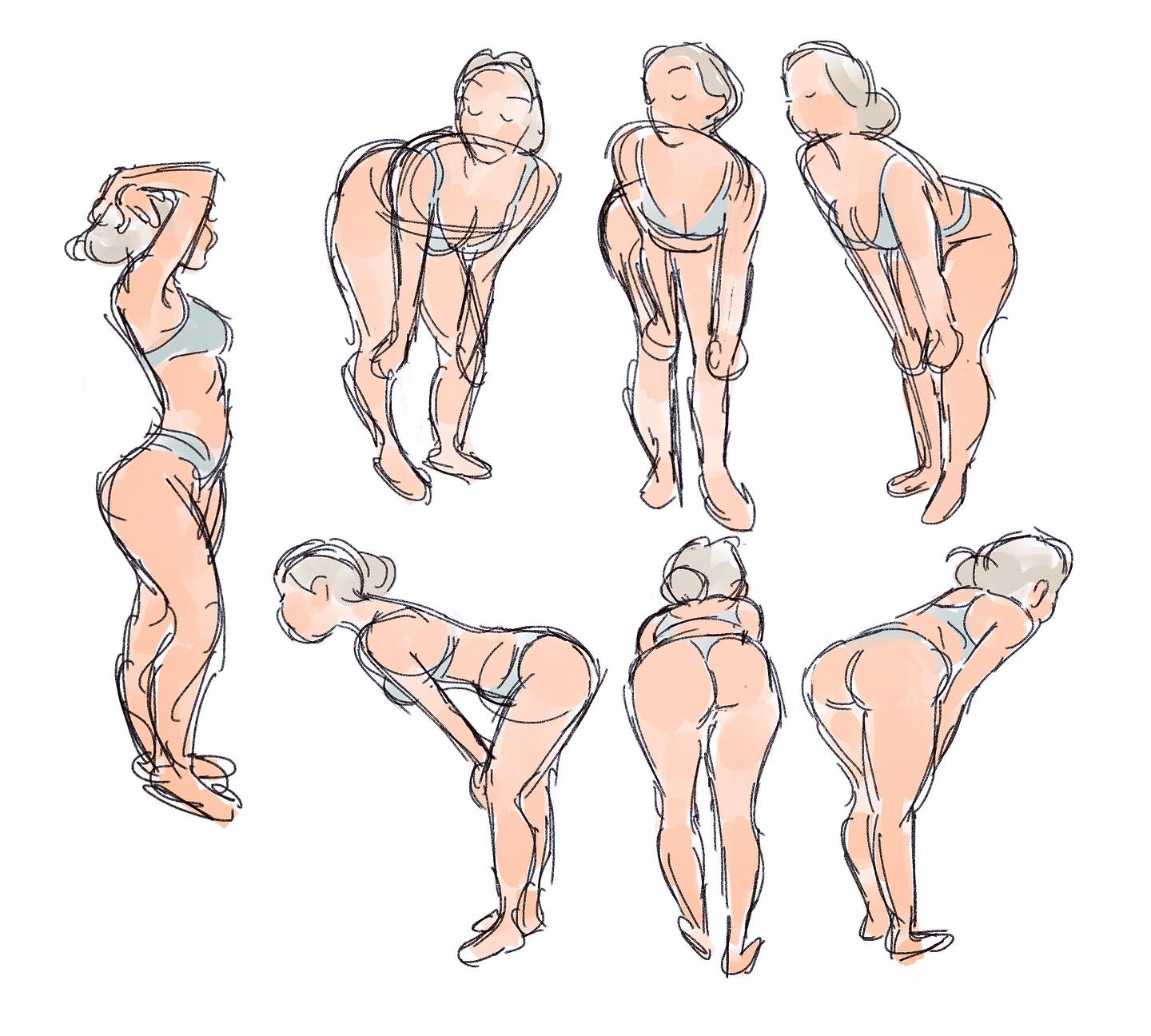
source @brooklynwalker.art
The leaning forward pose focuses on the figure bending at the waist, often seen in moments of concentration or exhaustion. This type of pose challenges your skills in foreshortening, as the head and torso angle downward while the rest of the body may maintain an upright position. The dynamic between tension and relaxation is key in this pose, as some parts of the body may contract while others relax. A great product to help bring more life into your figure drawing is a Gesture Drawing Figure from Amazon. These figures can be adjusted to different postures, including a forward lean, helping you to visualize and sketch more accurately.
17. The Reclining on Elbows Pose
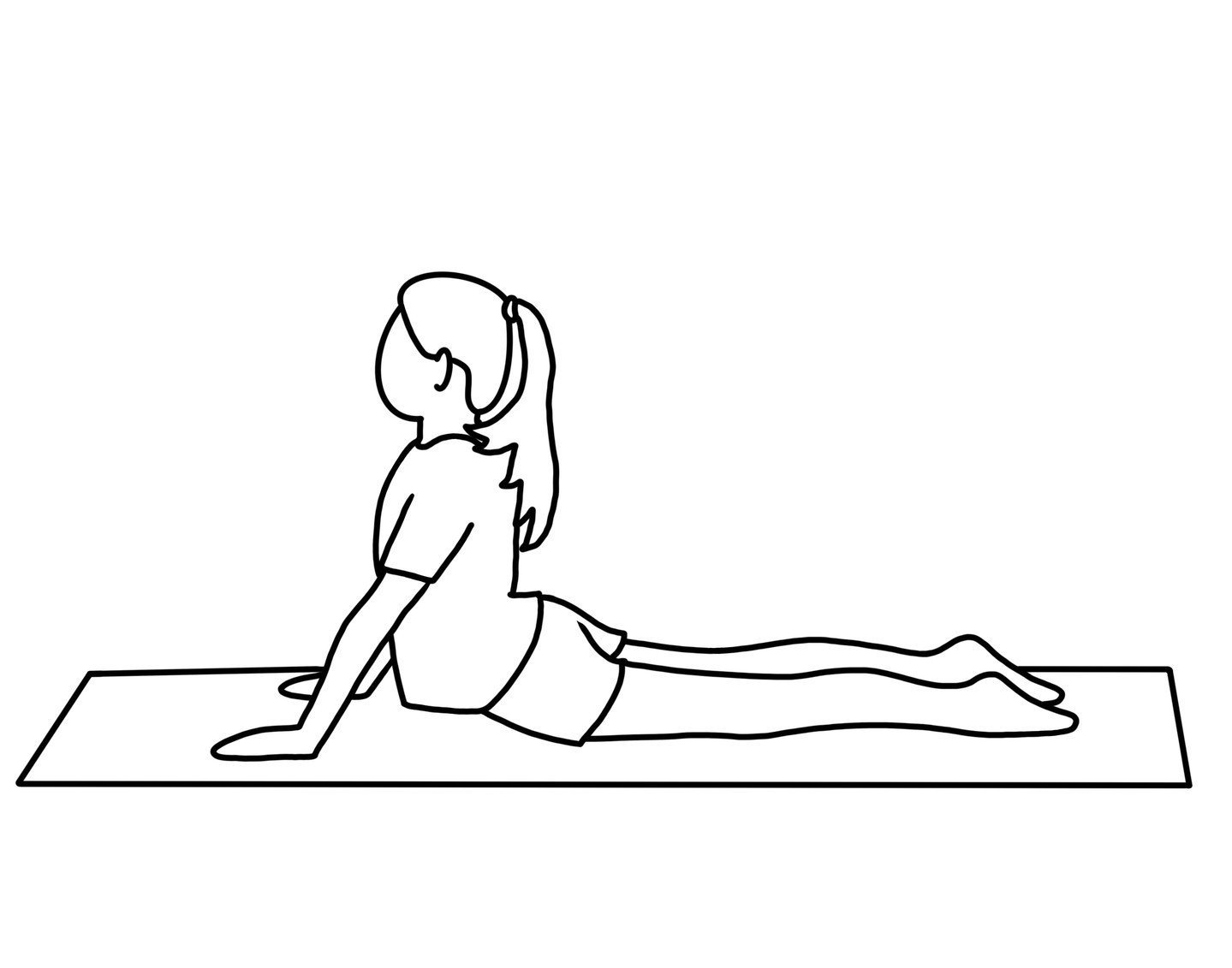
source @yogeesyoga4kids
Reclining on elbows is an intriguing pose that requires understanding how the body supports itself in a slightly reclined position. When someone lies on their back but rests on their elbows, their torso rises, creating angles that you’ll need to translate onto paper. This pose allows for experimenting with perspective and depth, as certain limbs may come closer to the viewer, while the rest of the body recedes. It’s important to observe how the elbows and the back align, as this can be a tricky aspect to capture. For this pose, you can use Prismacolor Premier Colored Pencils from Amazon for enhancing the texture and creating detailed contrasts, especially for the skin tone and light play on the figure.
18. The Reaching Pose
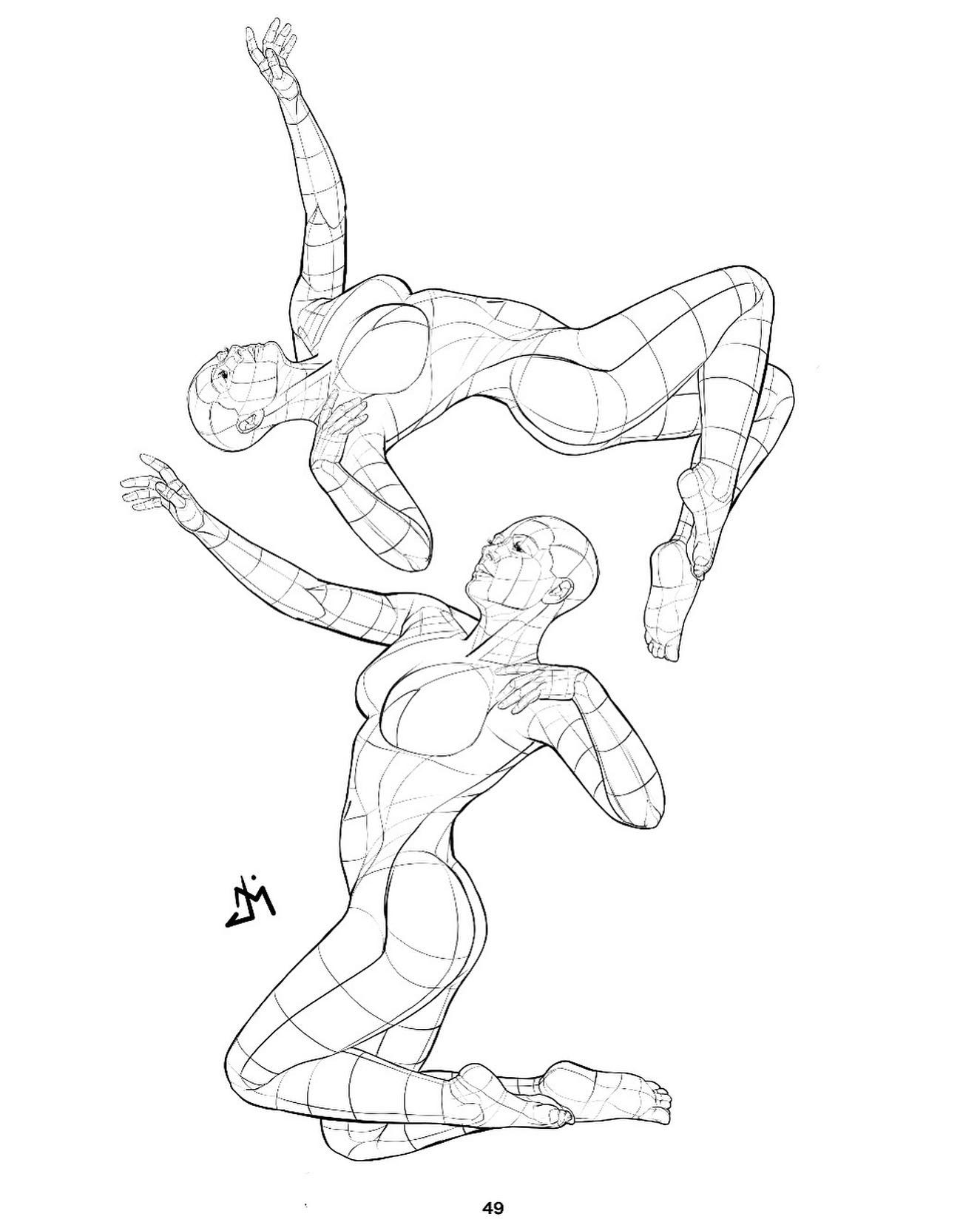
source @posereference
The reaching pose provides an excellent way to study the stretch and tension of the body. Whether someone is reaching upwards, sideways, or even out in front of them, the pose involves a great deal of body elongation. You’ll need to observe the way the arms stretch, the chest opens up, and the core stabilizes the torso. The key to capturing this pose is understanding how the body moves when it is under tension, especially in the arms and shoulders. For enhanced depth and realism in your drawing, Winsor & Newton Professional Watercolor Pencils available on Amazon will allow you to blend and layer your work, giving the figure a lifelike appearance with smooth transitions.
19. The Reclining with One Leg Bent Pose
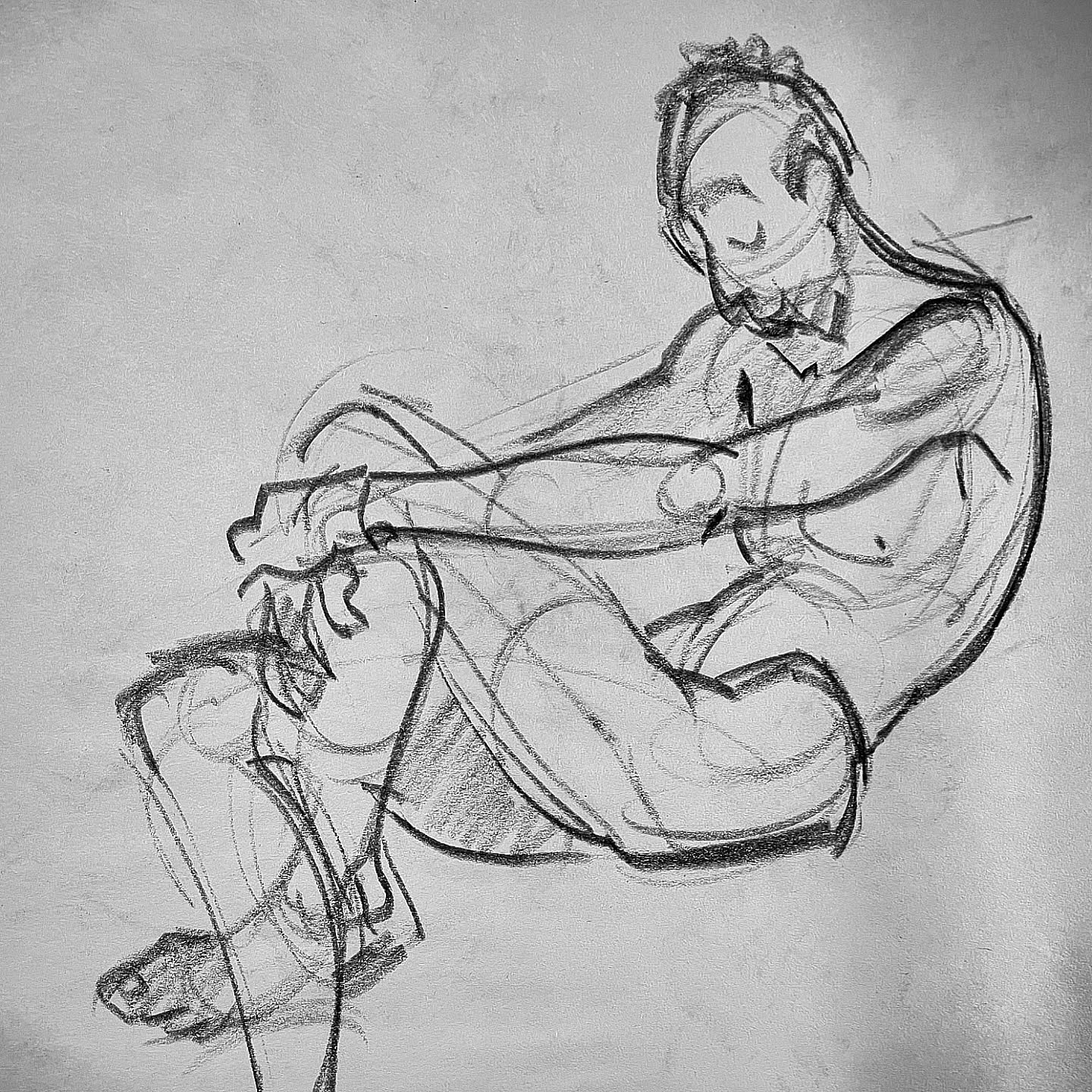
source @gilliangestures
Reclining with one leg bent combines the relaxed nature of reclining with the added complexity of a bent leg. This pose is commonly seen in lounging or relaxing positions. It’s ideal for exploring how the legs bend and the way the weight shifts when one part of the body is raised while the rest of the body remains supported by the ground. Pay close attention to the way the muscles in the bent leg stretch and contract, and how they create tension within the figure. As this is a more detailed pose, consider using Koh-I-Noor Hardtmuth Colored Pencils from Amazon for detailed work on both the figure’s structure and the background elements.
